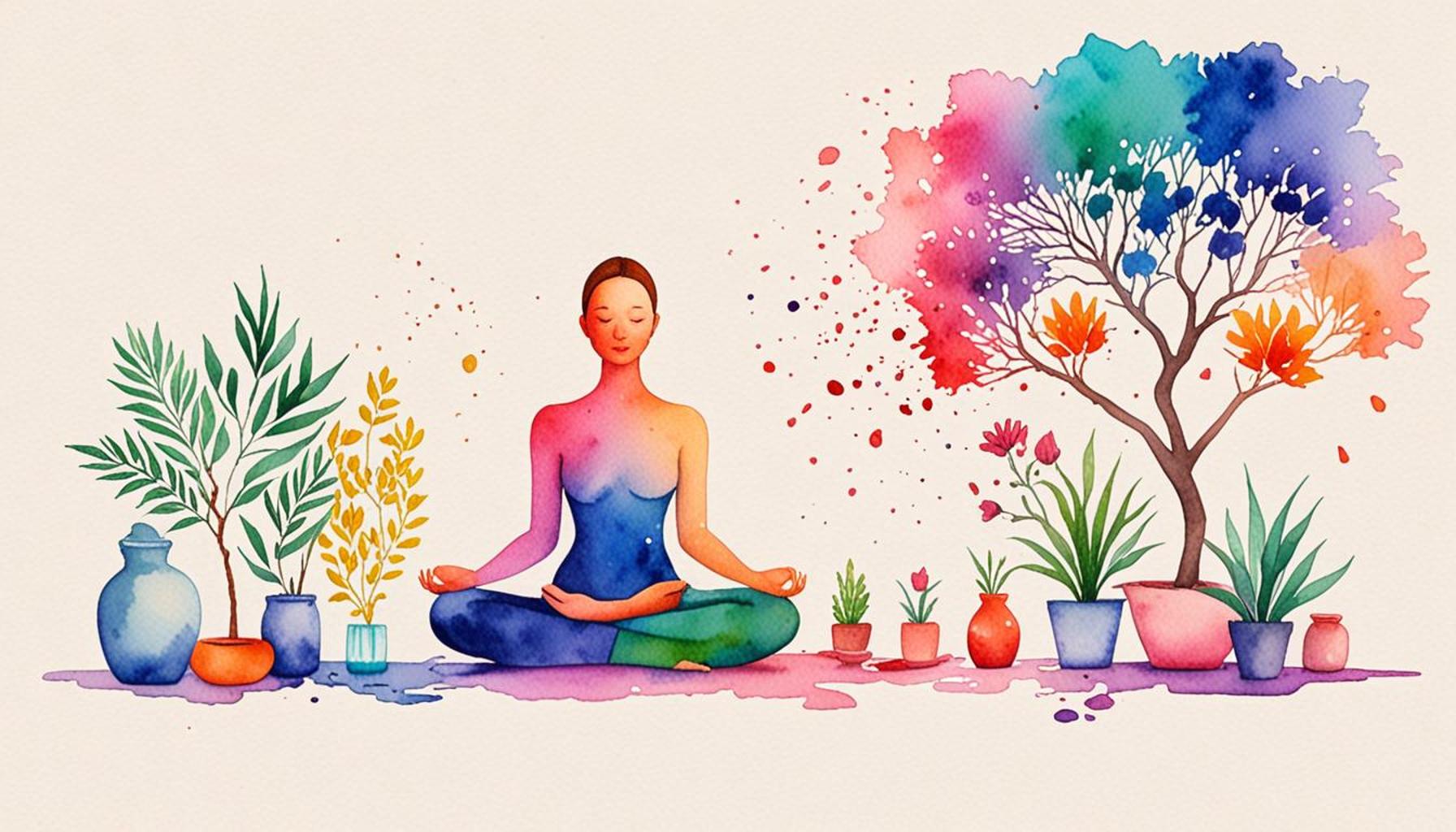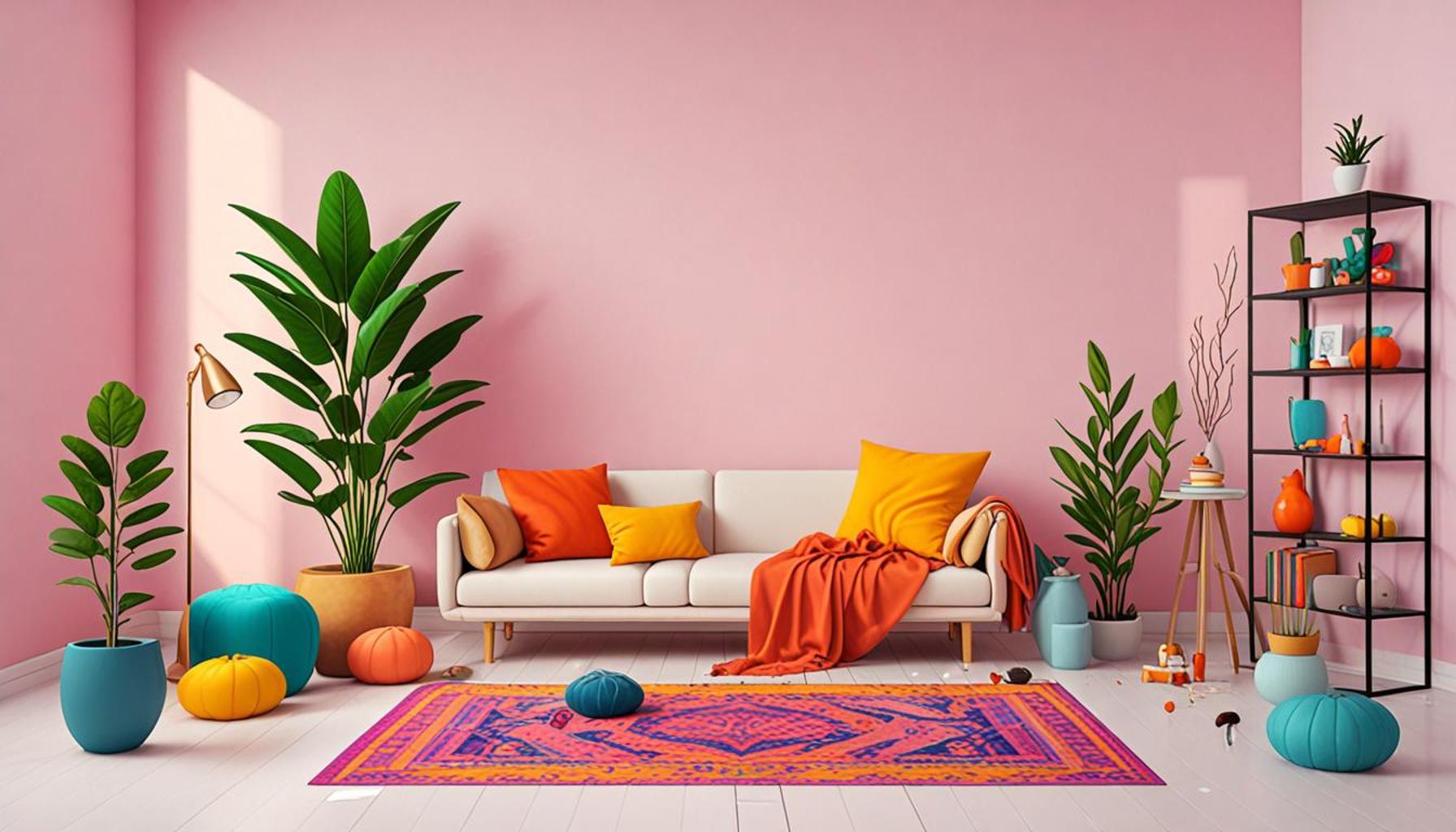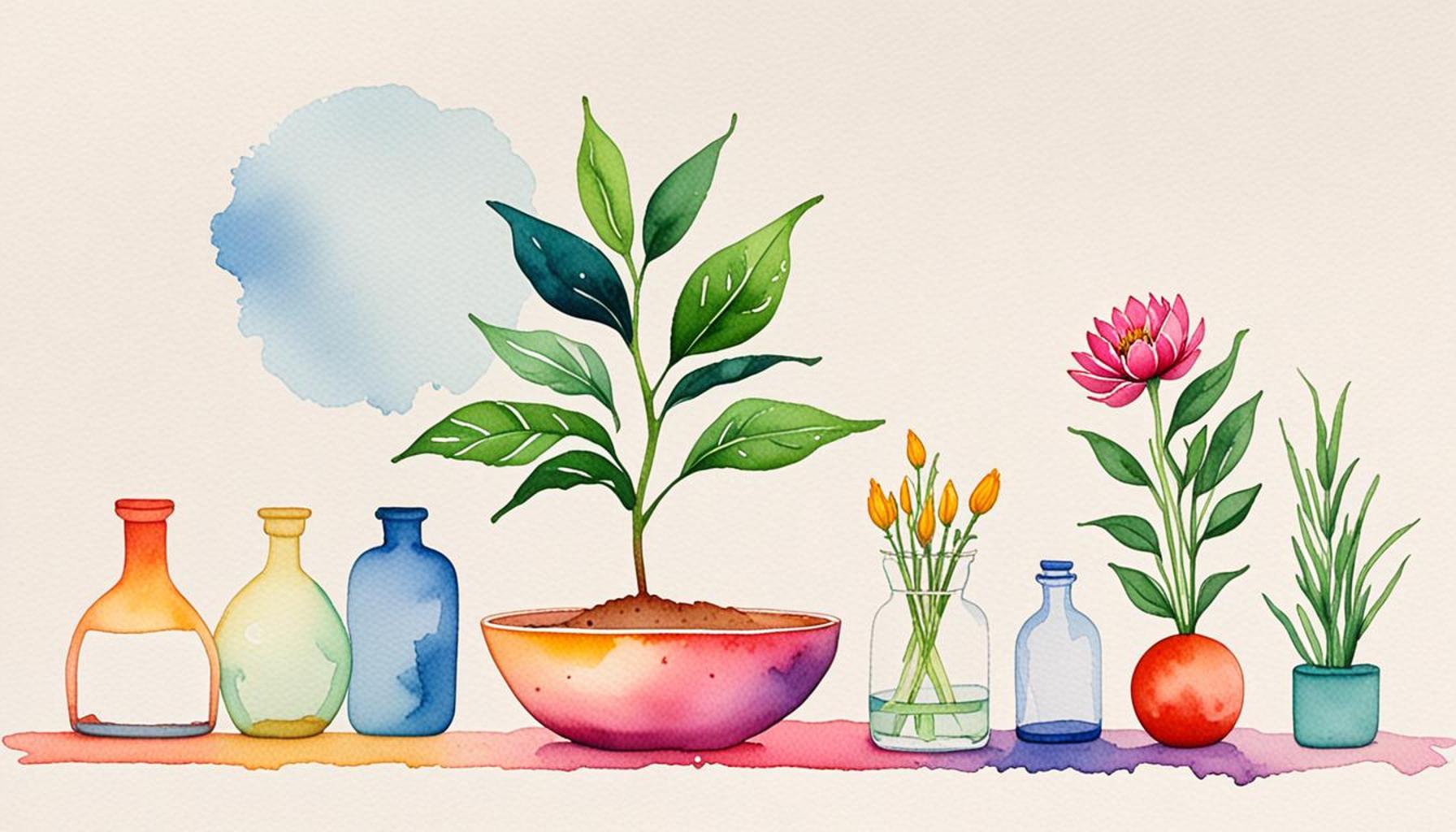Mindful Living and Stress Reduction: Creating a Minimalist Space to Calm the Mind

The Importance of Mindful Living
In a society where the pace of life relentlessly accelerates, embracing mindful living has emerged as a priority for many seeking balance and tranquility. The overwhelming demands of modern life—from work obligations that stretch beyond traditional hours to the constant barrage of notifications from our devices—create an environment ripe for stress. In this chaotic landscape, creating a minimalist space can transform one’s daily experience, providing a much-needed sanctuary for the mind and spirit.
At the heart of mindful living lies the practice of decluttering. Embracing minimalism doesn’t merely mean acquiring less; it involves assessing the purpose and value of the items we surround ourselves with. For example, the American Psychological Association has noted that clutter can negatively impact mental health, often leading to feelings of anxiety or being overwhelmed. By systematically reducing physical clutter, individuals can pave the way for enhanced mental clarity, making room for creative thoughts and peaceful reflection.
Intentional Design and its Impact
Another key aspect is intentional design. The choices we make in decorating our spaces can significantly affect our emotional well-being. Consider how calming colors, such as soft blues or gentle greens, combined with natural materials like wood and plants, can create an inviting atmosphere. Research suggests that environments designed with nature in mind can improve mood and foster feelings of relaxation. For instance, incorporating elements like houseplants not only purifies the air but also brings a sense of calm that modern city-dwellers often crave.
Incorporating Mindful Practices
Furthermore, integrating mindful practices such as meditation or yoga into daily routines can dramatically enhance your living space’s capacity for relaxation. Designating an area in your home as a meditation corner, complete with cushions, soft lighting, and perhaps a small water feature, can encourage you to take the time for introspection and mindfulness. Numerous studies have demonstrated that consistent meditation can reduce stress and anxiety, fostering a lifestyle that emphasizes presence and gratitude.
Ultimately, the principle of minimalism transcends aesthetics—it is a holistic approach aimed at improving quality of life. By nurturing simplicity in our environments, we can cultivate spaces that resonate with calmness and peace. As we further explore the principles of minimalist living, a wealth of actionable insights will unfold, guiding you toward a life characterized by serenity and mindfulness.
Join us in transforming your home into a sanctuary of tranquility, embracing all that the practice of mindful living has to offer. A journey toward simplicity and mental wellness awaits, so take the first step towards discovering your personal sacred space today.
DISCOVER MORE: Click here to enhance your workspace efficiency
Understanding Minimalism for Stress Reduction
Embracing minimalism as a lifestyle choice opens doors to stress reduction and mental clarity in profound ways. The fundamental principle of minimalism is to prioritize quality over quantity, allowing individuals to focus on what truly matters, thereby reducing the mental clutter that accompanies excess. The notion is simple yet powerful: by curating a space filled only with meaningful items, we create an environment that fosters peace and tranquility.
The significance of our surroundings cannot be overstated. Studies indicate that the environment we create can greatly influence our mental health. Clutter can provoke anxiety, making it challenging to concentrate or relax. A minimalist approach encourages individuals to consciously select items and decor, transforming living spaces into serene retreats that soothe the mind. This leads to a lifestyle reflecting mindfulness, where every element serves a purpose or evokes joy.
Benefits of a Minimalist Space
Creating a minimalist space is more than just aesthetic; it evokes numerous benefits that go hand-in-hand with mindful living practices. Here are some of the key advantages:
- Enhanced Focus: Fewer distractions create space for productivity and creativity, helping individuals engage more fully in daily tasks.
- Improved Mental Clarity: A clean and organized space can reduce feelings of overwhelm, paving the way for a tranquil mind.
- Increased Calmness: Minimalist design promotes an atmosphere of serenity, allowing the mind to unwind after a long day.
- Encouragement of Mindful Choices: With fewer items to take care of, individuals can practice gratitude and appreciation for what they possess.
- Simplified Living: Adopting a minimalist mindset can simplify routines and foster a healthier lifestyle, emphasizing quality sleep, nutrition, and self-care.
Integrating these principles into your home doesn’t require a complete overhaul overnight. It begins with small, intentional shifts. For instance, start by evaluating the items in your living space: Is each piece enhancing your life, or merely taking up space? Purposefully eliminating the unnecessary not only declutters your home but also declutters your mind.
Mindful Consumption
An essential component of mindful living is mindful consumption. This concept goes hand-in-hand with minimalism, urging individuals to consider the true value and origin of their possessions before bringing new items into their lives. This means asking questions like: Will this new piece genuinely add value to my space? Does it align with my appreciation for simplicity and ease? By fostering this awareness, individuals can support a lifestyle that values sustainability and intentionality, promoting both personal and planetary well-being.
As you begin this journey of creating a minimalist space, consider it a gradual process of self-discovery. Understand that it is not just about reducing material items but rather embracing a lifestyle that enriches your mental clarity and emotional resilience. Each decision made within your space can serve as a step towards an overall more serene and balanced life.
| Aspect of Minimalism | Impact on Well-being |
|---|---|
| De-cluttering | Creates a sense of order and reduces visual distractions, promoting a tranquil atmosphere. |
| Natural Lighting | Enhances mood and improves energy levels, contributing to mental clarity. |
| Mindful Decor | Inspires reflection and connection with personal values, fostering inner peace. |
| Intentional Space Design | Promotes mindful interactions and encourages relaxation, reducing overall stress levels. |
In the pursuit of mindful living and stress reduction, creating a minimalist space has become essential. By understanding how each element within that space influences mental and emotional well-being, individuals can transform their environments into sanctuaries of calmness. De-cluttering not only restores order but also alleviates the overwhelming nature of constant visual stimuli. Meanwhile, maximizing natural lighting serves to uplift spirits, amplifying energy and promoting mental clarity. The inclusion of mindful decor invites introspection and connection to one’s values, thereby fostering a serene atmosphere. In addition, intentional space design not only streamlines daily activities but also cultivates mindful interactions, ultimately resulting in reduced stress levels. As you dive deeper into the world of minimalism, seek out ways to integrate these principles into your own living space, ultimately leading to a calmer mind and a more harmonious life.
DISCOVER MORE: Click here to learn how to declutter your digital life
Designing Your Minimalist Space
Transforming your personal space into a haven of tranquility requires thoughtful attention to design elements that align with minimalist principles. Key to this process is the idea of functional design, where every item serves a clear purpose. This can be achieved through careful selection of furniture, decor, and even colors. Neutral hues, such as whites, beiges, and soft grays, create a calming backdrop, while strategically placed pops of color can evoke happiness without overwhelming the senses.
The Power of Natural Light
One significant aspect of minimalist design is the incorporation of natural light. Harnessing daylight can greatly enhance the mood and atmosphere of your space. Large windows, open curtains, and mirrors can reflect and amplify the light, making your environment feel more expansive and airy. According to a study conducted by the American Psychological Association, exposure to natural light can boost serotonin levels, thereby improving mood and fostering a sense of calmness. If natural light is limited, consider using dimmable LED lights that mimic daylight, contributing to a tranquil environment even during nighttime hours.
Decluttering Mindfully
Decluttering is a vital practice in creating a minimalist space that promotes stress reduction. It’s not merely about getting rid of items; it’s about doing so mindfully. This means evaluating each item’s contribution to your well-being. Techniques such as the KonMari Method, which encourages individuals to keep only those items that “spark joy,” can serve as a guiding principle. Organize your space in a way that allows easy access to the items you use most, while securely storing the rest, so that your living area remains manageable and inviting.
Incorporate designated storage solutions that suit your minimalist approach. Consider multi-functional furniture with hidden storage, or stylish baskets and bins that complement your decor while keeping items organized. This not only maintains a clear visual space but also reduces the mental burden often associated with disorganization.
Mindfulness Through Nature
Bringing elements of nature into your home, often referred to as biophilic design, further enhances the benefits of a minimalist space. Introducing houseplants can significantly elevate your living environment. Research shows that plants improve air quality, reduce stress, and heighten feelings of well-being. The presence of greenery creates a connection to nature, fostering a sense of calm and enhancing mindfulness. Consider low-maintenance plants like succulents or peace lilies if you’re new to plant care; they thrive in various conditions and offer aesthetic beauty.
Additionally, incorporate natural materials such as wood, stone, and organic fabrics, which can provide warmth and texture without overwhelming the senses. A simple wooden table, cotton throw, or bamboo mat can evoke a sense of simplicity and earthiness, qualities that resonate deeply with the minimalist philosophy.
The Role of Rituals in Minimalism
To embed mindful living into your minimalist space, it is crucial to establish daily rituals that promote calmness and clarity. These rituals might include a simple morning routine with herbal tea, evening meditation sessions in your serene environment, or regular decluttering practices that keep your space aligned with your goals. By creating intentional moments that prioritize your mental health, you ensure that your minimalist space continuously evolves as a supportive backdrop for a mindful life.
DISCOVER MORE: Click here for innovative storage solutions
Conclusion: Embracing Serenity Through Minimalism
In our fast-paced world, the importance of mindful living cannot be overstated. By adopting a minimalist approach in our personal spaces, we not only cultivate an environment conducive to stress reduction but also provide ourselves with a sanctuary that nurtures mental clarity and emotional well-being. As we’ve explored, designing your space with functional design, harnessing the power of natural light, and embracing nature through plants and organic materials are fundamental steps in achieving this aim.
Moreover, the intentional practice of decluttering mindfully ensures that every item serves a purpose, ultimately reducing the visual and mental noise that often leads to anxiety. Incorporating daily rituals that reinforce mindfulness can solidify these changes, transforming your minimalist space into a true haven for relaxation and reflection.
While these concepts might initially seem daunting, the journey toward a calmer, more intentional life begins with one small step. As you embark on this transformative process, consider how a carefully curated, serene environment can dramatically impact your daily experience, enhancing not only your mental health but also your overall quality of life. By deliberately creating a space that mirrors your aspirations for peace, you open the door to a lifestyle that honors simplicity and well-being.
In conclusion, by exploring the principles of minimalism and mindful living, you can embark on a journey of self-discovery while fostering a tranquil atmosphere that rejuvenates your mind and body. Embrace the challenge, and allow yourself to be guided by the beauty of simplicity.



